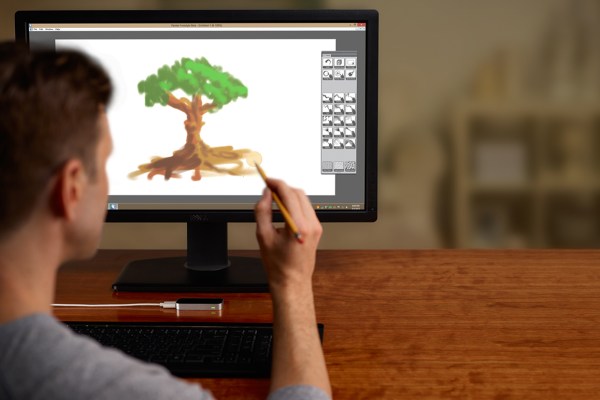Leap Motion hasn’t even launched its first product yet (the first devices ship May 13), and already the company is on a roll. Now, it’s announcing a collaboration with HP, to bring its brand of 3D motion control to that company’s devices, first via bundling the Leap Motion Controller with select HP computers, and then later by hardware integration that embeds Leap tech right into HP gadgets themselves.
Embedding is a major step for Leap Motion, since it means users eventually will be able to access all of the company’s 3D motion control features without needing any kind of peripheral. Leap Motion co-founder and CEO Michael Buckwald explained in an interview that the functionality of Leap, whether embedded or standalone, should be exactly the same when it does eventually arrive, although this partnership with HP, the first such arrangement with an OEM PC manufacturer, is still at a very early stage. This first outing of embedding capabilities for Leap is big news for the company, however, even if shipping devices are still a ways off.
“It’s exciting for us on two levels. One, it’s a strong validation of confidence in leap from a technical point of view, as well as validation that it can be embedded in consumer devices,” Buckwald said. “The other is that it means a lot to our developer ecosystem as well. Yes, we’re talking about embedding the motion-sensing part of the technology, but we’re also talking about embedding Airspace, the Leap developer ecosystem.”
HP computers that are Leap Motion-enabled will come with Airspace, Lesp’s application store for Leap Motion-compatible titles, pre-loaded. That’s a huge advantage for Leap and its developers in terms of discoverability, and making sure that customers are exposed to software built for Leap Motion in the first place. Apps for Leap Motion are an integral part of the launch and platform strategy, since without software to use with the unique and impressive hardware, it’s unlikely that anyone will stick with the device long-term.
The company’s ability to impress big name partners early and often is also a very good sign for Leap Motion’s potential sustainability. It has already signed up Asus as a partner, too, and the company will ship some of its computers bundled with Leap Motion controllers. Retail partner Best Buy will also be doing endcap displays, meaning users will be able to try out the new technology for themselves, which is a huge boon in terms of convincing people it’s something worthwhile.
This new HP deal is just the start for Leap in terms of its embedded tech opportunities. Buckwald says that while the final design of a Leap Motion-enabled device hasn’t been defined yet, it could work either with placement above a display like most current webcams are positioned, or below, as it’s placed with the current standalone Leap hardware. He also said that mobile device integration is definitely something else coming down the line.
“Mobile will definitely be a part of our strategy in the future,” Buckwald said. “Tablets and phones are a great example of a use case where there’s a major benefit to the consumer to embed Leap. Anywhere we think we can provide value, we’re interested in eventually embedding in there.”
For Leap, the challenge however is less about identifying ways it could benefit users, and more about staying focused and being diligent in keeping its aspirations within the grasp of its small team of staff, he said. Embedding the tech is a huge step, and one that could position Leap as a new staple tech for inclusion in the computing products of third-party OEMs, so keeping the company’s eyes on that prize is the current priority.
